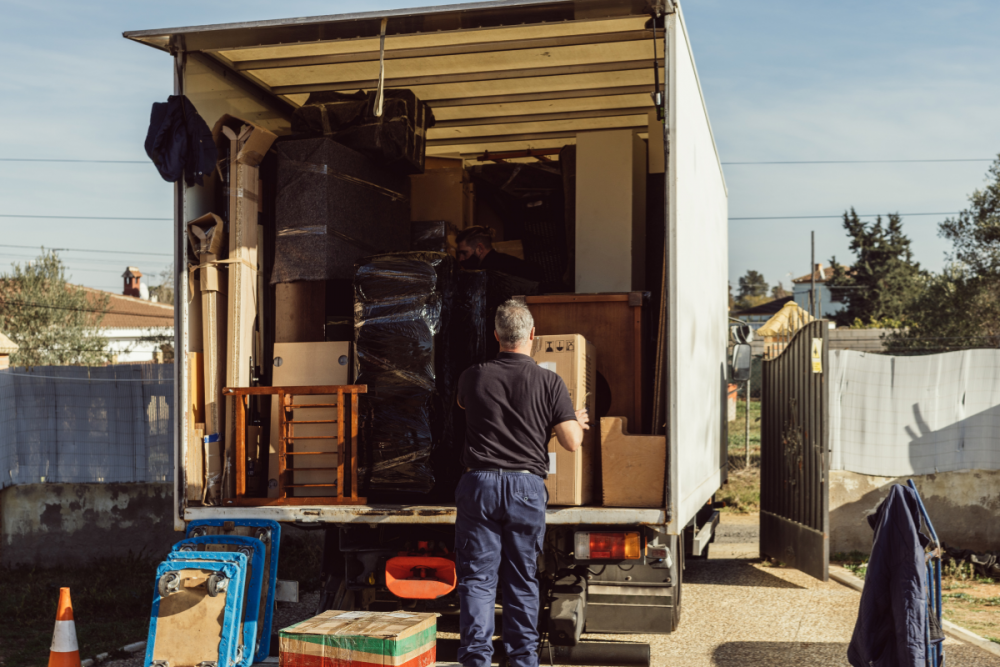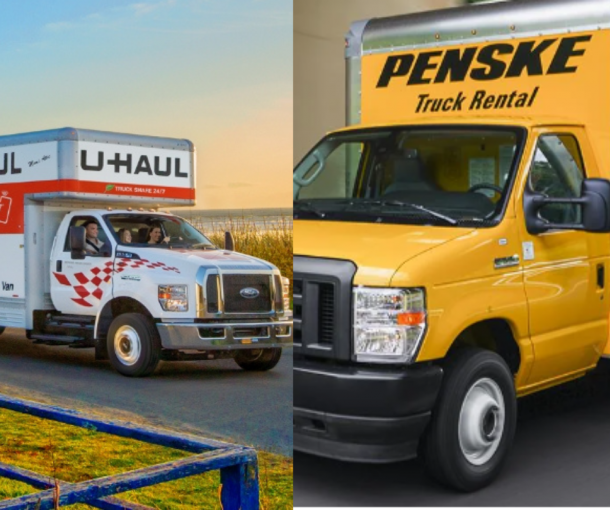The 7 Best Moving Hacks to Help Make Your Move So Much Easier

So, you have decided to move to a new location and planned a moving date. But, you find the idea of packing for the move tedious. Is there an easy way to do it?
If you are wondering about the best way to move, here is a fact.
Each move is different and there is no one-size-fits-all solution for everyone. However, there are some packing hacks for moving that anyone can use to make their moves easier.
Using these moving hacks will improve your chances of enjoying a stress-free move without as many worries.
1. Using AI to Help You Move
Quite simply, the moving industry is being redefined by artificial intelligence. The ability to make data-driven decisions through AI-powered algorithms is streamlining each step and improving efficiency. Moving involves thorough planning and making multiple decisions which can be stressful. With accurate cost estimations and customer-based customizations, AI is making the process easier.
AI-based online tools can simplify tasks like creating a home inventory list, streamlining move coordination, and driving down moving costs. Virtual assistants can bring the entire process into the palm of the customer through mobile devices.
AI’s ability to analyze data can help you get a detailed analysis of the move while taking into account important information about the new location. Plus, AI can modify the moving schedule by considering any changes in the plan and scanning all variables.
Consider the Agoyu AI-based platform for example. It uses cutting-edge visual analysis to create a home inventory list. It can check dimensions and generate accurate quotes for your move. All you need for this hassle-free process is your phone camera.
2. Create a Moving Checklist
Preparing a moving checklist is essential for breaking down the entire process into small and manageable tasks. Not only does it help to organize the process, but it also helps in avoiding any surprises. In other words, it is a blueprint to make your move less stressful.
You will be surprised how moving costs can escalate at a quick rate. Having a checklist at hand will help you keep track of the spending and stay within budget. A checklist also allows you to manage time more efficiently by spreading out the tasks within the timeline. That way, you will stay in charge and not be stressed out by having to handle everything at once.
To be honest, it is easy to forget a few things during a stressful move. A checklist can act as a reminder and ensure that no parts of the process get overlooked.
However, preparing the checklist needs a clear idea about the moving process and some experience. Many first-time movers may not even know about what to pack first when moving. If this is your first move, consider getting assistance from pros.
3. Set Your Budget
Another vital aspect of relocation management is creating a budget. With multiple fixed and variable costs involved, estimating your moving budget takes time. But, setting a realistic budget will help you to manage expenses and save costs whenever possible.
Once you have created the moving inventory it is time to assess the expenses. The first step is to take a close look at your finances and decide how much you can spend for the move.
List down the expenses based on your moving needs. Your budget will vary based on the type of move you want to make, the distance, and the size of the inventory. There will be additional expenses for moving special items like pool tables or pianos.
Next, decide when you want to move. The timing of your move can impact the costs in a big way. Beyond that, consider the expenses related to packing materials, insurance, storage fees, and travel expenses.
Then it is time to pick the right moving company or select a truck or container for a DIY move. Research and compare the costs before picking a company. Set aside a buffer amount to manage any contingencies or hidden costs. During the move, keep track of the expenses and adjust the budget if needed.
4. Purge Before You Pack
Parting with your household junk is necessary before you move. But, decluttering is not as easy as you think. Somewhere along the way you might end up wondering about how you managed to accumulate so much.
Overcoming the emotional obstacles and parting with old items is a tough task. But once done, it makes your move a lot easier. Purging will help you cut moving costs and the entire process becomes easier with fewer items to pack and unpack,
The good news is, you do not have to complete the task in a day or two. It is important to plan the decluttering process ahead of the move and start with small steps. Depending on the size of your home, you can start two to six months in advance. Organizing a garage sale is a good idea to discard old items.
Make sure to use sustainable methods for disposal and find ways to recycle or repurpose your old stuff while decluttering. You will also need to find the right way to dispose of any hazardous item that donation sites do not accept.
Need Movers? Your Move, Your Choice

Instant Exact Cost for Your Specific Move
Agoyu’s AI technology give you quick, precise estimates. Scan your room, receive instant quotes from multiple movers, and confidently select the best option for you.
STEP 1 OF 3
STEP 2 OF 3
or Have a Top Mover Call Me Now!
Do it the old fashion way! A top mover will call you to provide an instant quote over the phone or at your house!
5. Label Everything in Detail
While planning how to make moving easier, many homeowners underestimate the importance of labeling each box or carton. A big mistake.
This is a task that can make the process of moving easy and more effective. The best part is that there is no ideal labeling method. You can do it the way you want.
To start with, labeling and handling instructions on the boxes make it easier for the movers to arrange them in the right manner. It also allows them to handle fragile items in the best possible manner. This reduces the chance of your possessions getting damaged during the move.
Once the packed items arrive at the new location, you will need to unpack the essential items first. Imagine a scenario with 20 boxes spread out in your living room. And you have no idea which box contains the items you need to unpack first.
Proper labeling of each box is necessary to reduce stress while unpacking. Having a “first open” box containing all the essentials you will need after stepping into the new house is a good idea.
6. Plan Your Moving Date
The fact is, there is no perfect season for moving. Each season has its pros and cons. While moving in summer is more expensive, winter can present challenging weather conditions. In spring and autumn, there can be scheduling conflicts with work and school events.
That said, choosing the day of the week for your move matters too. Charges on weekends tend to be more than the weekdays. But if you need support from your family members or friends during the move, weekends are better options.
Likewise, moving companies tend to be busier during the beginning and end of the month. You can expect more affordable rates in the mid-month period. Keep in mind that holidays and long weekends can reduce the availability of moving services.
Beyond that, personal situations can affect moving dates. You need to match the selling date of your current residence with the possession date of the new home. If you are on a rented property, consider the lease end date as per the rental agreement.
Other important factors are the children’s school calendar and job responsibilities. You might need to start your new job on a specific date in the new location.
Choosing the right moving date requires balancing multiple factors. However, flexibility with the moving date will help you to get cheaper rates
7. Pack All Necessities Last
Packing the necessary items the day before you move is the best idea. That way, you will not need to open a packed crate, pull out an item for use, and repack.
Start the packing process with items that you use the least. These include storage items, outdoor furniture, and garage items, and move to out-of-season clothing. The next items in line are books, decor, and artwork. Then, pack the linens, shoes, clothes, and jewelry.
The kitchen should be the last space you should pack as you are likely to use it till the moving day. In truth, the kitchen is not easy to pack and decluttering will play an important role in making the task easy. You can pack some of the serving dishes and small appliances early to make the process easier.
One useful packing hack for moving is to pack the packing supplies like tape and utility knives in the end. Chances are you will need them on moving day. Remember, avoid mixing items of different kinds or from different rooms in the same box, That will make unpacking easier.
Keep a few everyday essentials in a suitcase or bag that you will carry. These can include items like a toothbrush, a change of clothes, essential medication, toys for kids, and necessary paperwork. That way, you will have the essentials at hand in case the moving truck gets delayed.
Moving Hacks: FAQs
When should I start packing for a move?
That depends on the size of your home. To make the process less stressful you can start five weeks before the moving date.
What is the hardest room to pack when moving?
The kitchen is the hardest room to pack since it involves packing glassware and breakable dishes. In addition, cleaning out the cabinets and drawers will take time.
What should I get rid of before moving?
Get rid of any items that have stopped being useful and items that you will not use in the new location.
Final Thoughts
These are some tips for moving that will work in all situations. But the most important packing and moving tip is to plan properly before the move. Making use of these moving hacks with the right action plan will keep the move on track.
If the idea of moving stresses you out, consider taking support from a reliable moving service. Agoyu can help you connect with the best movers and compare mover prices through its easy-to-use AI-based platform. What’s more, the Agoyu online tool is completely free!
Looking for the right moving company? For the best deals, try Agoyu NOW.


